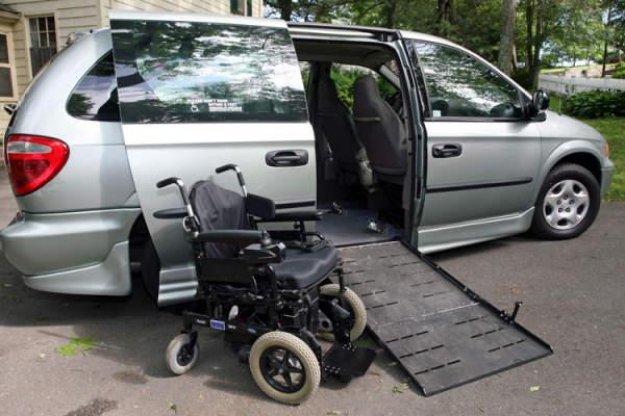How To Enter And Access Wheelchair Vans
Accessing a wheelchair van has two components.
First, there’s the question of where you’re entering.
Second, there’s the matter of how you’re entering. Understanding how disabled persons access a wheelchair van requires a review of both elements.
Point of Entry/Exit
There’s more than one way to get in and out of a van. There’s more than one place to do it, too. Let’s look at the various options.
- Driver Door: Many disabled drivers, including those who use wheelchairs, will enter the vehicle via the driver’s door. Either alone, or with assistance, they’ll lift themselves into the driver’s seat. The driver may need help with the door, getting into the seat and/or with storage of the wheelchair (when applicable).
- Side Door. Many wheelchair users prefer side door entry. In part, that’s because the side doors will generally slide apart when opening, providing a great deal of space. It’s also easy to install a ramp or a lift designed for side door entry, as many are available. There are disadvantages to side door entry–it can be difficult for the wheelchair user to make it to the driver’s seat. It also creates some obvious limitations with respect to parking space selection–you need to have enough room on the door side of the van to facilitate entry and exit (and to handle the ramp or lift).
- Rear Door. Rear door entry is another option, but it isn’t as popular as side entry. That’s because it often relegates the wheelchair user to sitting in the far rear of the vehicle–it’s not a good solution for those who use chairs and who drive. Additionally, if one is using a ramp as part of a rear entry plan, it can expose them to some risks from traffic in many situations. It has advantages in terms of loading and unloading with a lift in parking lots, but overall it’s not the preferred method of entrance and exit.
Method of Entry/Exit
Now that we’ve looked at where one can enter and exit a wheelchair van, we can look at the methods they use to do it.
- Ramps. Ramps are probably the most commonly used devices to facilitate entrance and exit to and from vans. Their popularity stems from two considerations. First, there are many different kinds of ramps, insuring something that will work in almost any situation. Second, they are cost-effective, often costing only a fraction of what one might pay for a quality lift. It’s difficult to generalize about the strengths and weaknesses of ramps, due to the many different variations. However, they all do require a great deal of space in which to function (relative to lifts) and they often require greater levels of third party assistance.
- Lifts. A lift, as the name suggests, lifts the wheelchair from ground level to the entrance point of the vehicle. Generally, one stations his or her wheelchair on a flat platform and the lift elevates them using either an electric motor or a hydraulic system. There are some completely manual lifts, but they are growing less common. Lifts combine simplicity with a small footprint–they don’t take up a great deal of space. They can be used at either side or rear entry points.
The Most Popular Means of Accessing a Wheelchair Van
It’s safe to say that side entry options are more popular than rear entry for those with wheelchairs.
It’s also true that most wheelchair users prefer lifts to ramps.
As such, we can conclude that the most popular way to access a wheelchair van would be via side entry, using a lift.
However, it’s important to understand that this “most popular” method is not the most commonly used. That honor would go to the use of ramps with side van entry. The cost differential between ramps and lifts is significant and many wheelchair users find that they can get the job done with a ramp option. They don’t utilize a lift, even though it might offer some advantage in terms of convenience.

















